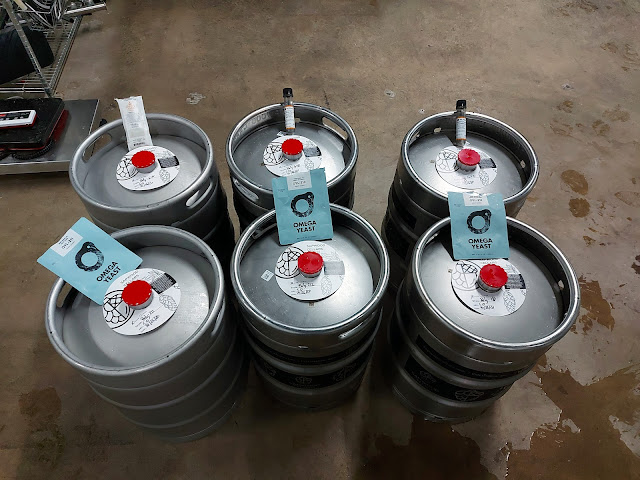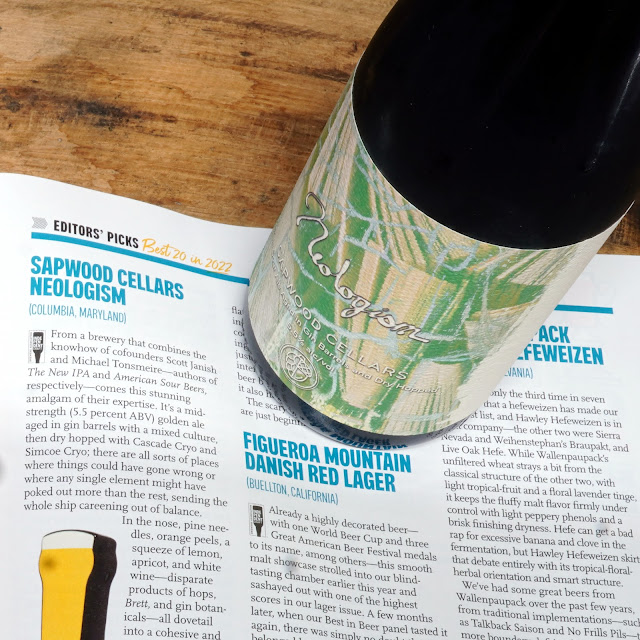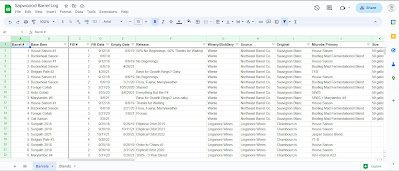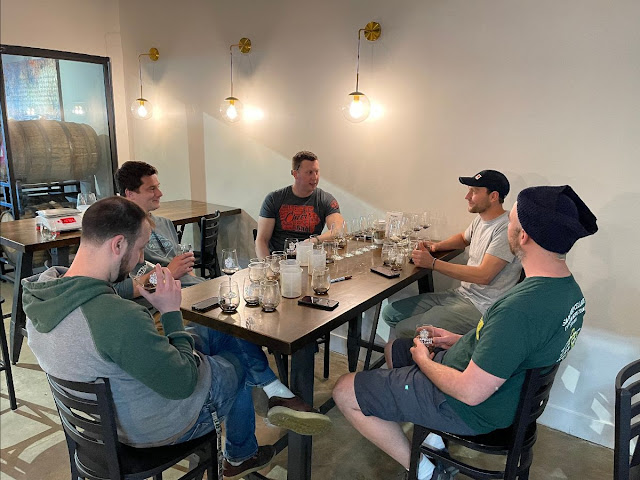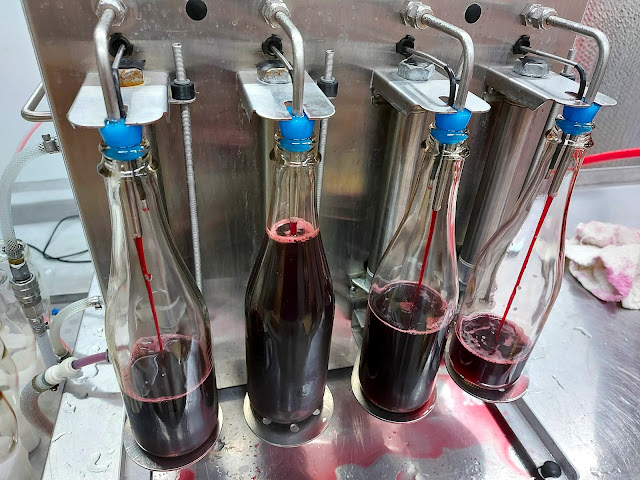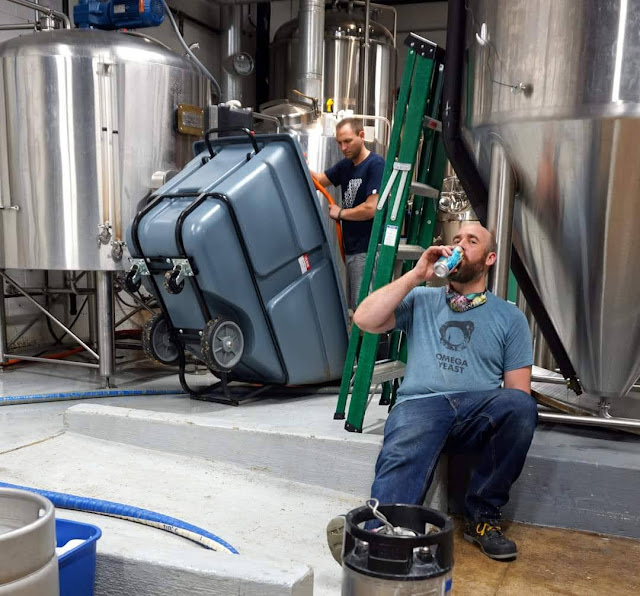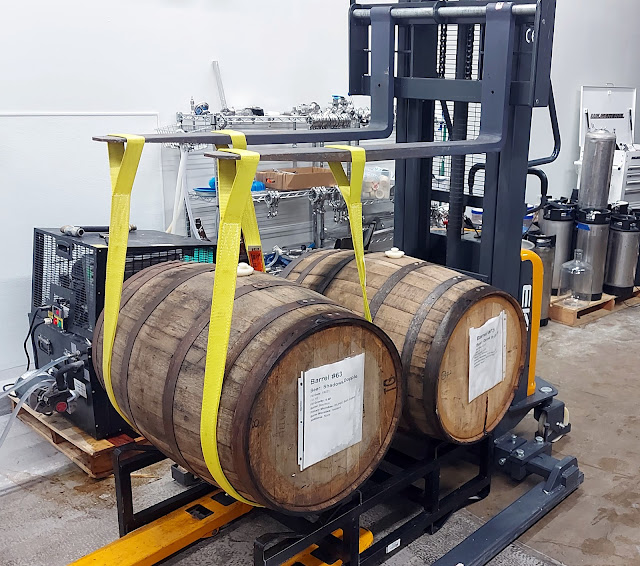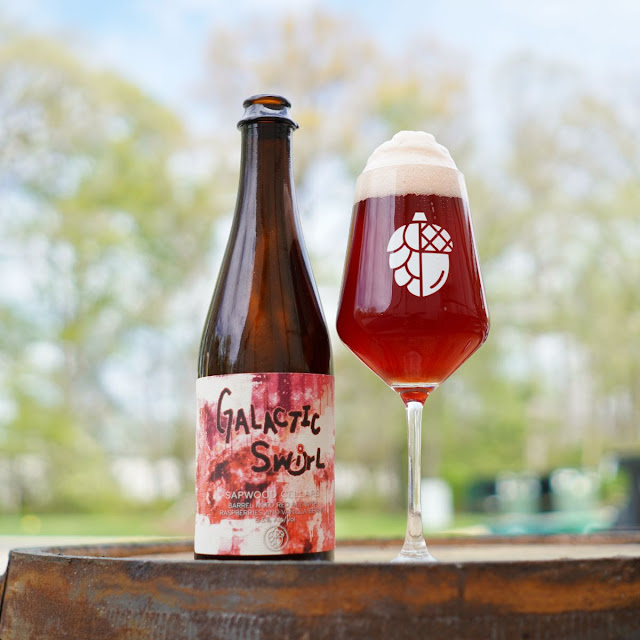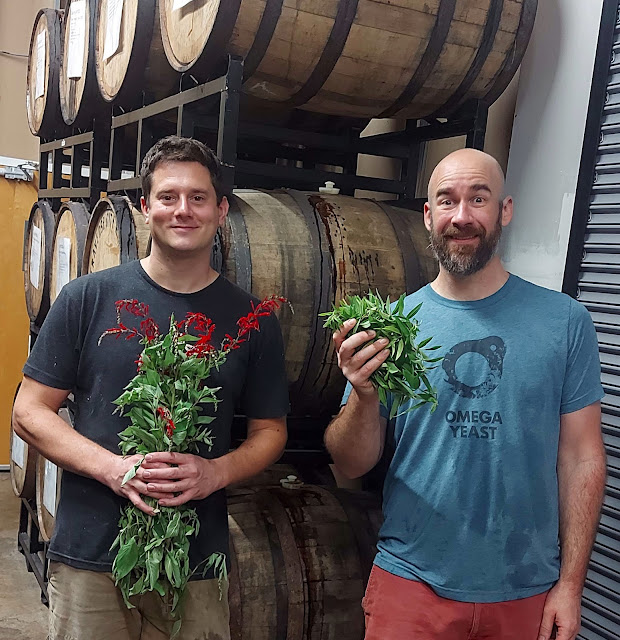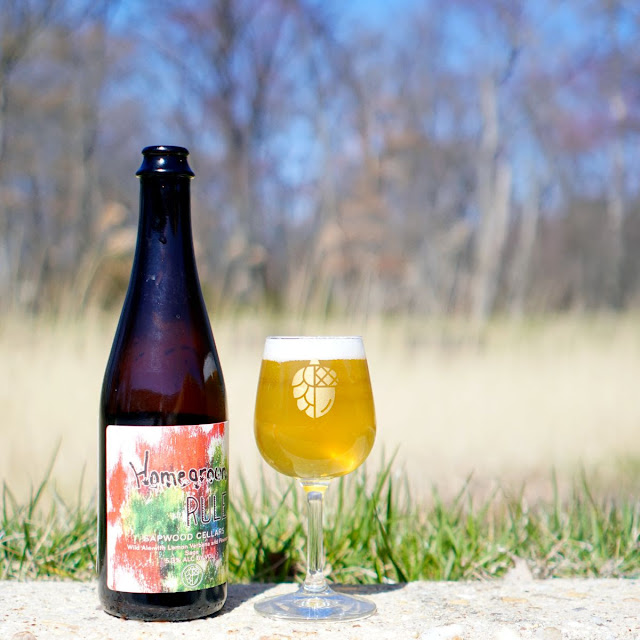profile
Ice cream soda floated into our collective consciousness 150 years ago. Now, a beery take on this fanciful beverage is winning converts.
The post A Dreamy Pairing: Beer & Ice Cream appeared first on CraftBeer.com.
The fourth-largest producer of hops in the U.S., Michigan has become a unique test subject for the future of American hop production—and craft beer itself.
The post The New Nobles: Michigan Hops appeared first on CraftBeer.com.
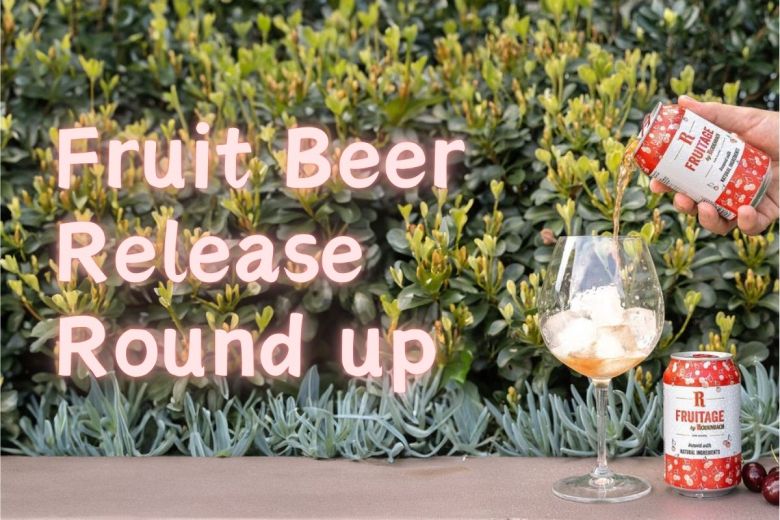 With spring well and truly sprung, we highlight three new fruit beer releases as we reach ideal weather for the style.
With spring well and truly sprung, we highlight three new fruit beer releases as we reach ideal weather for the style.  Made with Australian-grown ginger, the new product joins the Heads of Noosa core range of tap-only products.
Made with Australian-grown ginger, the new product joins the Heads of Noosa core range of tap-only products.  From Irish stout to hazy pale ales, Beer & Brewer rounds up the best non-alcoholic beers for Dry July.
From Irish stout to hazy pale ales, Beer & Brewer rounds up the best non-alcoholic beers for Dry July. To be a part of the craft beer scene in New Orleans is to be a part of the city’s vibrant culture of culinary delights, thoughtful drinks, deeply rooted music traditions, and an emphasis on socializing within the community.
The post Beer in a Cocktail Town: How Craft Breweries Have Enriched NOLA appeared first on CraftBeer.com.
In craft brewery taprooms, water can play a role in creating the sense of belonging and safety intrinsic to building hospitable community spaces.
The post Freely Given: Water as a Hospitality Tool in Craft Beer Spaces appeared first on CraftBeer.com.
Brandon Hernández combed the desert and laid out a stellar septet of breweries to visit in Las Vegas.
The post Vegas (Beer), Baby! appeared first on CraftBeer.com.
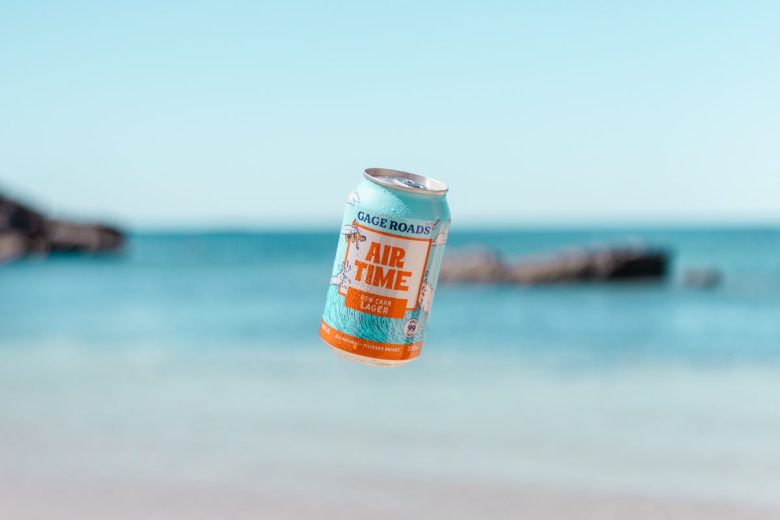 New low carb lagers and an Australian rollout of a popular non-alcoholic stout hit the shelves and beer taps.
New low carb lagers and an Australian rollout of a popular non-alcoholic stout hit the shelves and beer taps. In addition to music venues, bodacious barbecue, and epic tacos, this booming metropolis is The Lone Star State’s leading locale for incredible craft beer.
The post Three Beer-Filled Days in Austin, Texas appeared first on CraftBeer.com.
Bière de garde is a malty style of beer that is undiscovered to many. Translated to "beer for keeping," the style was traditionally brewed in Northern France and is known for its malt-focused, toasty taste, and slight sweetness.
The post Bière de Garde: ‘A Breath of Fresh Air’ appeared first on CraftBeer.com.
 This week I thought I would mix things up a bit by presenting a very high gravity Tart Cherry fruit mead made with widely available ingredients. High Gravity Mead Design I started making high gravity melomels back in 2016 as I have always been fascinated with the style, which I find to be some of […]
This week I thought I would mix things up a bit by presenting a very high gravity Tart Cherry fruit mead made with widely available ingredients. High Gravity Mead Design I started making high gravity melomels back in 2016 as I have always been fascinated with the style, which I find to be some of […]  This week I take a look at the Noble hop group which are varieties of hops primarily grown in Continental Europe for use in European lagers and ales. Noble Hops The noble hops group are varieties of hops mainly grown in Central Europe that are characterizes by rich aroma and flavor. They are widely used […]
This week I take a look at the Noble hop group which are varieties of hops primarily grown in Continental Europe for use in European lagers and ales. Noble Hops The noble hops group are varieties of hops mainly grown in Central Europe that are characterizes by rich aroma and flavor. They are widely used […]  This week I take a look at yeast autolysis which is the decomposition of yeast, and how it affects beer flavor as your beer ages. Yeast Autolysis The word autolysis literally means self-destruction, and yeast autolysis is the final stage for a yeast cell life where the yeast cell wall literally bursts open and releases […]
This week I take a look at yeast autolysis which is the decomposition of yeast, and how it affects beer flavor as your beer ages. Yeast Autolysis The word autolysis literally means self-destruction, and yeast autolysis is the final stage for a yeast cell life where the yeast cell wall literally bursts open and releases […]  This week I welcome back John Palmer to discuss English and American Pale Ales and IPAs and how water shapes the flavor of these beers. Subscribe on iTunes to Audio version or Video version or Spotify or Google Play Download the MP3 File– Right Click and Save As to download this mp3 file. Your browser […]
This week I welcome back John Palmer to discuss English and American Pale Ales and IPAs and how water shapes the flavor of these beers. Subscribe on iTunes to Audio version or Video version or Spotify or Google Play Download the MP3 File– Right Click and Save As to download this mp3 file. Your browser […] Jerry Franck, an Academy Award-nominated documentary filmmaker, followed a few notable lambic breweries to help sustain what many see as an anachronistic approach to beer making.
The post The Coolship Has Landed: Film Elevates the Art of Lambic Brewing appeared first on CraftBeer.com.
This July marks five years since I left my day job with the federal government to brew full-time. We filled our first barrel with mixed-fermentation saison before opening the tasting room at Sapwood Cellars. Since then, we are up to 80 oak barrels with a dedicated suite for mixed-fermentation. So, I thought it would be a good time to sit down and reflect on the lessons that Scott and I have learned over the years! The things we got right, the things we got wrong, and where we are going from here!
Luckily, we've had a pretty good run so far! We've cultivated a great group of supporters in our Wood Club. Neologism (gin-barrel-aged Cascade/Simcoe Cryo dry-hopped pale sour) was named one of Craft Beer & Brewing's Top-20 beers of 2022 by way of winning a massive blind tasting. Despite the pandemic we've been able to modestly expand (production, staff, and space)! We're even shipping beers around the US through Tavour!
I recently realized that Google discontinued Feedburner in 2021... which is why you haven't gotten an email from me in a while. I've changed The Mad Fermentationist over to a new email service, so if you've signed up you should get emails for new posts going forward! If you want more emails from me, I write the near-weekly Sapwood Newsletter (with details on new beers often including info on ingredients, process, and equipment)!
The Things We Got Right
Diverse Microflora - It is certainly simpler to have a single "house" culture. It allows for relatively worry-free blending, but doesn't leave as much room for unique flavors. Maintaining multiple cultures, we have to worry about the microbes from one barrel over-attenuating in the bottle if they are more attenuative than others in the blend. However, the variety of flavors expressed and the options for blending is worth the effort at our scale. We've been even happier since we started selecting our favorite barrels and using them to inoculate subsequent batches. Now we can select which character fits a pale sour vs. a sour red.
Last week we blended our second batch of Growth Rings (three year blend). To ensure all the microbes have time to get to know each other, we blended the four barrels (all different pale base beers) into a tote. They'll sit there for a couple months to ensure the gravity is stable before priming and bottling.
Balancing Planning and Creativity - We started 2023 with a rough timeline of the 20 or so barrel-aged mixed-ferm we'll release. However, when we fill barrels there generally isn't a specific plan for which barrel will be in which beer. Pale, wine-barrel-aged beer can be delightful on it's own, or serve as a great base of fruit, herbs, or dry hopping. When we taste them, we get to decide what will make the best possible beer. However, it's also nice to have unique bases/barrels earmarked for a particular purpose. Some examples of those include Opulence (sour red with dried sour cherries in the bourbon and red wine barrels), a Brett'd Belgian Tripel in Calvados (apple brandy), or Port barrels for There Are No Edges (Vin de Céréale).
Tracking Barrels - Using Google Sheets has worked out well for us. I can sort based on fill date, final gravity, base beer etc. It allows me to sit on my couch at home and look at what beers we have in need of fruit, blending, packaging etc. Barrels still fall through the cracks (nothing is more heartbreaking than tasting a barrel that is old/stale and seeing a note about how good it was six months ago). Sometimes a beer is delicious, it just doesn't fit into a blend.
Blending with Others - Whether it is our tasting room manager (Spencer), Lead Brewer (Ken), homebrewing friends, fellow brewers (e.g., the brewers from Other Half for a collab) etc. Tasting barrels with other people helps improve your palate, riff on ideas, and make more broadly appealing results. We all have flavor "blind spots" and it is a good idea to have other people looking too. It's fun to riff off other people's ideas and come up with flavor combinations that neither of you would have made on your own.
Packaging - Our general approach to packaging has been a big success... once we started measuring the dissolved CO2 in the beer rather than relying on time/temperature/pressure. We blend barrels or transfer fruited beers to our blending tank and cold crash. The day before bottling we'll push in sugar (boiled in water) along with Premier Cuvee champagne yeast (rehydrated with a small amount of Start-Up/GoFerm nutrient). We then carbonate the beer to ~2 vol of CO2, with the sugar and yeast taking the beer the rest of the way. We fill on a bottler (XpressFill) that purges and counter-pressure fills. So far it's resulted in relatively quick/clean refermentations with reliable carbonation.
The Things We Got Wrong
Not Allocating Time - It is easy to put-off barrel-aged beers for more pressing concerns. When there are DIPAs to dry hop, Pilsners to can, and excises taxes to exercise the sour beers are often pushed to the side. It's rare that a week or two of aging in one direction or another makes a dramatic difference... but it's hard to get the most out of a barrel program if it is always at the bottom of the priority list. We're getting better at it, but I still wish from the start I'd blocked off a specific time/day each week to taste barrels, trial blends, source ingredients, prop microbes etc.
Over-Correcting - Initially we weren't getting enough acidity in some of our beers, so we started pulling levers... colder rinsing barrels, lower hopping rates etc. Then our beers started becoming too sour, so we started veering back in the other direction. Managing a barrel program is like driving a cruise ship, it is difficult to pivot quickly! It's difficult to step back and tell if there is something causing one specific batch from being too sour (or not sour enough) or if there is a systemic issue.
I think we would have been well served to do a better mix starting early (some barrels cold or no-rise, more with just Brett etc.). This would have given us more options when it came to blending over- or under-soured beers.
Appreciating the Impact of Fruit On Acidity - Early on to help out some of those under-acidified beers, we went onto fruit. I was surprised how little additional acidity they picked up from refermentation. Sure adding a really acidic fruit (e.g., black currants for Fellow Feeling) contributed acidity, but just refermenting on wine grapes or peaches did not. However, as our cultures "matured" we suddenly had beers dropping from a tart pH of 3.5 to an obnoxiously-acidic 3.0 after going onto the fruit (2.8 pH was the lowest I measured). That's despite pitching rehydrated wine yeast to ensure a healthy and quick refermentation.
I thought maybe our resident lactic acid bacteria were becoming more hop tolerant, and the dilution of the beer with fruit was allowing them to kick into action. To test this we began adding a small amount of hop extract with the fruit (we use a 20% alpha extract from Hopsteiner). Our fruited beers stopped dropping pH nearly as much, and as an added benefit the head retention improved considerably.
Hot Side Hopping - I didn't appreciate how much of the classic funky lambic/saison profile originates with the hops. While we've always used a "restrained" dose of aged hops at the start of the boil (~.5 lbs/bbl), that just wasn't enough to give the beers the aromatic depth I was looking for. Recently we've been experimenting with a similar size whirlpool addition of cold-stored hops. So far the results are promising! I should have noticed that many of my favorite homebrewed Brett Saisons had big whirlpool additions and/or dry hopping... but those were all relatively quick turn-around and not barrel-aged. I'm glad Scott and Ken pushed to age some of our pale ales (pre-dry hopping) in barrels, an idea I wasn't excited about... but the results have been really delicious!
Where We Are Headed
Barrel-aged sour beer seems to be a wide/shallow market at the moment. The people who love them are still searching them out, but the average beer drinker seems to have moved on to less "challenging" more "reliable" styles. It's hard to know how much the rapid expansion of the segment played into this loss of interest. I've heard of quite a few breweries down-sizing or eliminating barrel-aged sour beers... Luckily we still have 150 people in our Wood Club, which is a great way for us to get these beers into the hands of our biggest supporters and a base-level of sales for eight releases a year. We're aiming to make our mixed-ferm beers more "delicious" the sorts of beers that people want to drink a whole bottle of, not just drink an ounce or two at a share.
However, as we've ramped up the mixed-ferm bottle release schedule (2019 - 8, 2020 -11, 2021 - 13, 2022 - 16, and hopefully ~20 in 2023) we occasionally have bottles to spare. Rather than distribute them locally, we've partnered with Tavour (which ships to many states). They just released Homegrown Rule, a "Marylanbic" base with homegrown lemon verbena (from my yard) and pineapple sage (from Ken's garden). It's tart and snappy, with plenty of our house microbe character, augmented by the citrusy-green notes of the herbs.
Cocktail-inspired beers allow brewers to get more creative while providing craft beer lovers with even more variety and diversity.
The post Flavor Forward: Cocktail-Inspired Beers appeared first on CraftBeer.com.
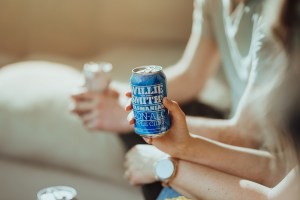
Tasmanian cidery says its new non-alcoholic Apple Cider has the profile of an alcoholic beverage.
The post Willie Smith’s enter non-alc cider market appeared first on Beer & Brewer.
 This week I take a look at the technical nature of beer brewing and how it differs from making other beverages like wine, cider or mead. Beer Brewing and Technology I often open my designing beer presentations with a description of the technical nature of brewing. Beer brewing is a much more technical hobby than […]
This week I take a look at the technical nature of beer brewing and how it differs from making other beverages like wine, cider or mead. Beer Brewing and Technology I often open my designing beer presentations with a description of the technical nature of brewing. Beer brewing is a much more technical hobby than […] Here’s a look at how six Northern California breweries are crafting conscious, sustainable beers, and why they do it.
The post The Localization of Beer Marches On appeared first on CraftBeer.com.
 Over the weekend I completed a long overdue revision of the BeerSmith forum. I moved to a new forum software platform, which adds a ton of new features. I also secured the main BeerSmith web site, blog, forum and recipes site so they all redirect to our secure server now. This resolved a series of […]
Over the weekend I completed a long overdue revision of the BeerSmith forum. I moved to a new forum software platform, which adds a ton of new features. I also secured the main BeerSmith web site, blog, forum and recipes site so they all redirect to our secure server now. This resolved a series of […] 


